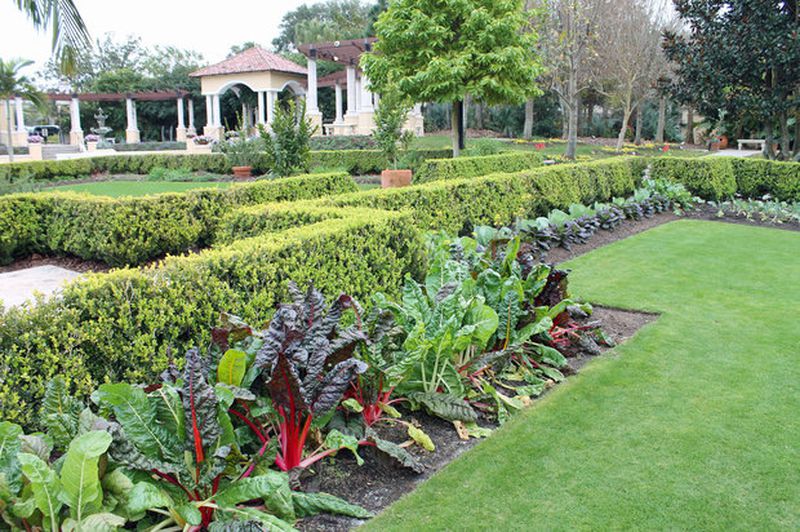The deck is built, the outdoor chairs and tables have been set out for use…now what? Why not plant an edible garden?
Landscaping with vegetables and herbs is a fun and time-honored tradition. Herb gardens have adorned many a backyard, from village to the royal court.
In earlier times, herbs took on religious significance, and were credited with providing protection from evil spirits, ghosts, and even the devil. Medieval Europeans assumed all plants to have some medicinal value. In the middle ages, plans for St. Gall, a Benedictine monastery, included a large, rectangular kitchen garden with 18 beds of vegetables and potherbs and a smaller square garden with 16 beds of medicinal herbs. 15th century rural manors and townhouses often contained small square or rectangular beds arranged in a simple grid pattern in their yards.
During the Renaissance, garden makers went beyond simple grid-layout of the medieval garden, organizing the squares and rectangles into more complex patterns. According to the Brooklyn Botanical Garden, “the knot, with its decorative interlacing bands of clipped herbs, became a feature of the pleasure garden. A geometric design within a square, rectangle, or circle was drawn on the ground, and each figure in the pattern was planted out with a single herb, closely clipped to maintain the design.”
Herb gardens were an important feature of pioneer homes. Placed in sunny corners near the house, they were readily available to the householders. As the population of America grew, herbs were carried aboard the ships heading for their new home. In the 18th and 19th centuries, farmers and householders usually combined vegetables, herbs, fruits, and flowers in a single garden.
Whether your yard is large or small, an apartment or a teeming ranch, an edible garden can add beauty and value to your home. You don’t need lots of space to plant your garden. Even containers on the back porch will do.
Here are a few of our favorite plants to add to your edible garden:
- Gourmet Greens: Plant mixed rows of various colors and types of lettuces and greens such as arugula and kale as an outstanding border in your yard, in containers on the back deck, or in window boxes. When ready to harvest, simply snip a few leaves, leaving the rest of the plant to grow.
- Huckleberry: A hardy 4’ evergreen, perfect for shady conditions, the huckleberries produce bright blue berries, perfect for jams, cakes and ice cream.
- Tomatoes: Plant cherry tomatoes in hanging baskets, along a trellis, or supported by a tomato cage in your garden.
- Beans: Sow beans directly into your planting bed or container (transplants don’t do well). Make sure to train them up a trellis or tower.
- Herbs: Herbs make a fantastic addition to your container garden, or, interspersed throughout the garden. Thyme, basil, oregano, mint and dill are all cooking favorites.
- Oregon Grape: The Oregon grape yields tart berries in the fall, perfect for making jams and jellies.
There are many other herbs and vegetables you can add to your garden. Our suggestions are simply a start. Have fun planting!
